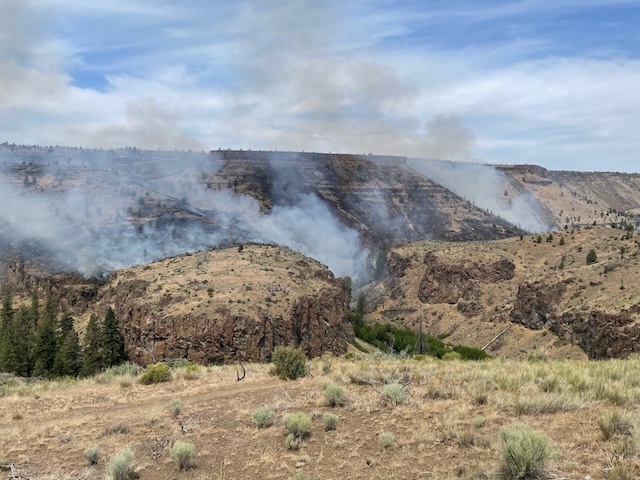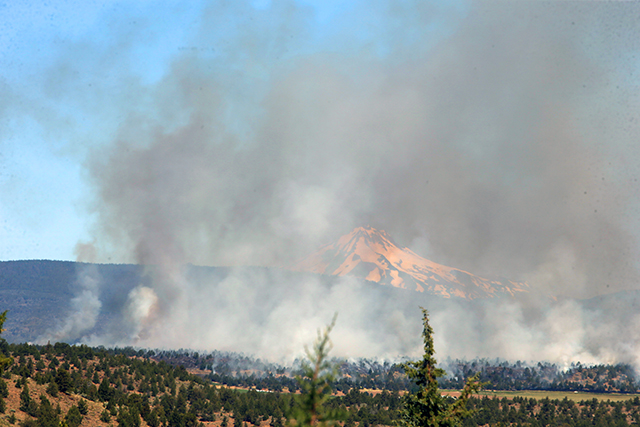Cylvia Hayes’ time in Bend
Published 12:00 am Saturday, February 28, 2015
Before finding herself at the center of a scandal that brought down Oregon’s longest-serving governor, and before she acquired the title of first lady that put her there, Cylvia Hayes made a life in Bend.
Her move to Central Oregon followed a master’s program at Evergreen State College in Olympia, Washington. Her time there was partially supported with money she earned from illegally marrying an 18-year-old Ethiopian whom she intended to help secure U.S. residency. According to a 1999 profile of Hayes in The Bulletin, after finishing school, a week of steady rain pushed her east from Eugene to Central Oregon, where she found an environmental movement to build a career around.
Many of the environmentalists here she worked with in the early and mid-2000s remember Hayes as a local pioneer of the green building movement and praise her commitment to the cause, though some said she appeared to put personal success before environmental progress.
Hayes did not return a call for comment on this story.
Hayes, who described herself as an environmental entrepreneur, worked for and started a number of organizations while in Bend. One of her first local projects was Friends of Bend, a group intended to protect livability as the region’s population took off. She also directed the organization Earth Connections, which initially promoted the enjoyment of nature.
Over time, her nonprofit work evolved into a for-profit environmental consultancy, 3E Strategies. That firm is at the center of the maelstrom that ended Gov. John Kitzhaber’s fourth term, as critics have accused Hayes of using her relationship to Kitzhaber and title as first lady to earn lucrative contracts.
In Central Oregon, however, former colleagues say Hayes’ environmental legacy is visible in the energy-efficient homes that have become the norm across new developments.
“Here in Bend, her most lasting piece is her work in green buildings,” said Mike Riley, executive director of the Environmental Center who worked with Hayes at his organization and with Friends of Bend. “There were many people in the private sector moving that way, but she helped them do more and make the case why it’s valuable.”
Matt Shinderman, a senior instructor at OSU-Cascades, said he met Hayes “when she was buzzing around some summer festival getting the word out.”
“She really elevated the level of discourse in Bend about sustainability,” said Shinderman, who served as the board chair of 3E Strategies in 2005 and 2006 when it was still a nonprofit. “Her greatest contribution may have been shifting the emphasis of conversation away from the green, sustainability side of things to the economics of sustainability. It really made sense to a lot of people after that, and I think you can see the huge impact on a variety of levels all over town.”
Lawrence Schechter, an architect and another former 3E chairman, said one of Hayes’ most enduring legacies is the Green and Solar Tour, which held its 14th showcase of sustainable homes in 2014.
“She was drawn to the building industry because it represents the largest component of the impact on the environment in terms of the use of resources and our consumption of energy,” said Schechter, who noted he had spoken with Hayes since Kitzhaber announced his resignation. “In order to do the most, the building sector is the obvious choice.”
Nikki Roemmer, the Central Oregon regional director of the Oregon League of Conservation Voters, said she met Hayes while volunteering on the tour.
“It was a real first, where folks could go and see what these things look like and how they can be cost-effective,” Roemmer said. “The tour was so instrumental in educating the public, and I think it shows.”
Another effort Hayes launched is the Building Green Council, which is now a component of the Central Oregon Builders Association. The council was started to bring together developers interested in promoting and learning more about green construction.
State Sen. Tim Knopp, R-Bend, COBA’s executive vice president, said his organization purchased the rights to the council from Hayes in 2007 for $30,000 in cash and $15,000 in advertisements COBA agreed to purchase from a publication Hayes ran.
“Our members thought there wasn’t enough being done with the council,” Knopp said. “It seemed it was a marketing opportunity for her to branch out and meet more people. My recollection is people were very frustrated that they weren’t getting the value of their dues back.”
Knopp acknowledged $45,000 “sounds like a lot of money,” but said his organization has more than earned its investment back. The money, Knopp noted, was a boon to Hayes, who was working to transition her company into a for-profit.
“… 3E became so successful that she wanted to do green energy on a bigger scale,” said Marilyn Miller, who knew Hayes through work at the Environmental Center. “She started going up to Salem a lot more, and that’s where the real change happens, with bills getting written, and she just took off in that direction when she moved over to a for-profit.”
In contrast to Knopp’s description, fellow environmentalists emphasized the authenticity of Hayes’ commitment to her work.
Roemmer noted one reason the Environmental Center awarded Hayes its “Earth Star” award is “because she built the cause into every part of her life.”
“She’s a zealot about these things, a zealot for a very good cause,” said Shinderman. “I would put myself in that same category, even though we go about things very differently. I think in her heart she really wanted to be an agent for change.”
— Reporter: 541-633-2160, tleeds@bendbulletin.com






